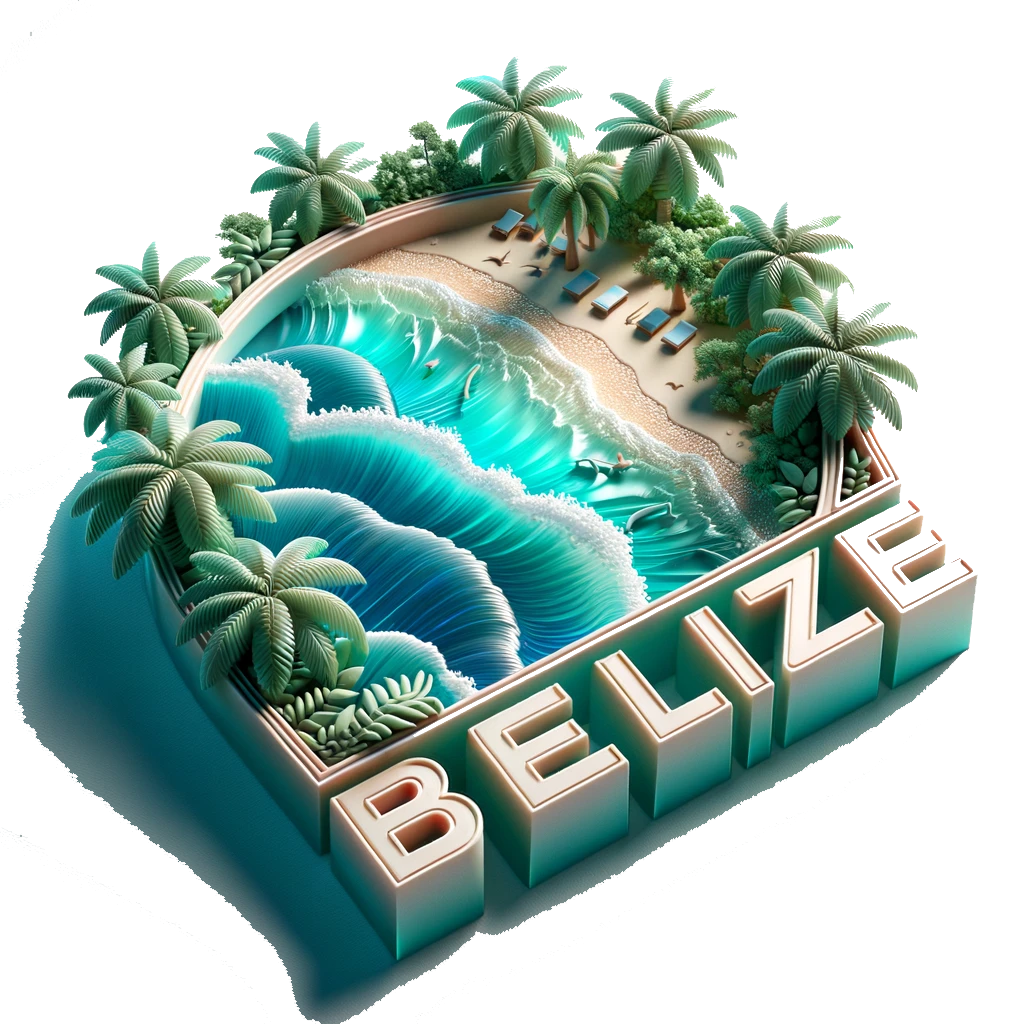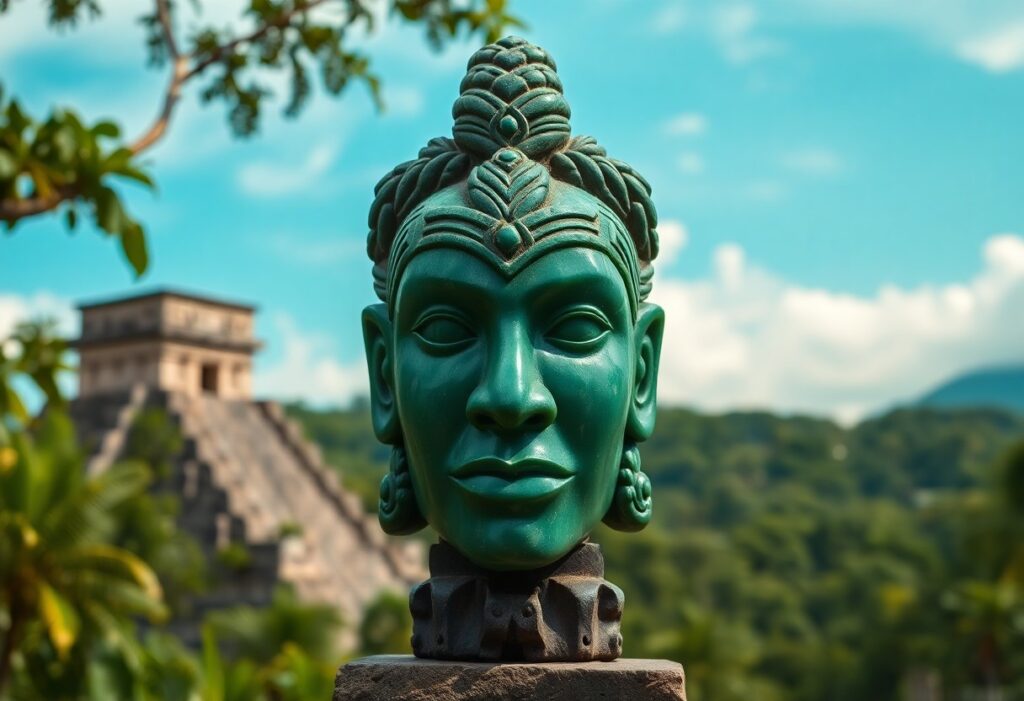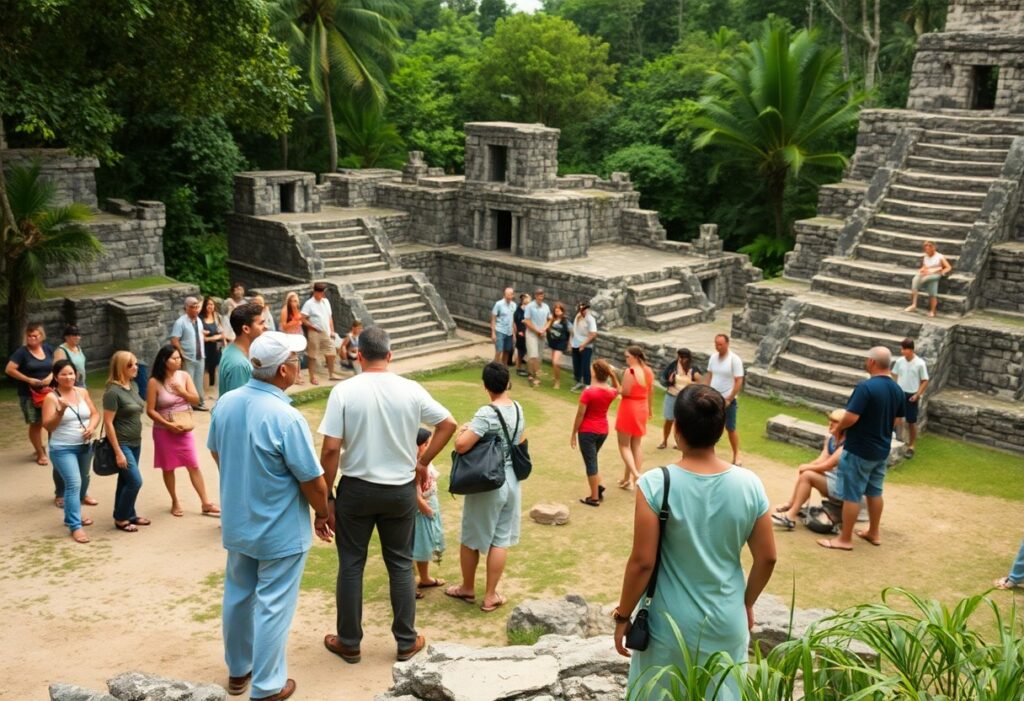Something is captivating about the story behind your nation’s flag, and Belize’s banner holds a particularly fascinating tale. When you look at the Belize flag, you’re witnessing more than just a piece of cloth – a powerful symbol of independence gained in 1981. The design combines vibrant red borders, a royal blue center, and a detailed coat of arms that tells your country’s unique story. You might be interested in the fact that the flag emerged from a nationwide competition that received 80 different entries, with the winning design coming from two public servants who understood the profound significance of representing Belize’s heritage. Whether you’re a proud Belizean or a curious visitor, understanding these origins helps you appreciate the rich symbolism woven into every aspect of this national emblem of unity and freedom.
Historical Background
The journey of Belize’s national flag reflects your country’s rich colonial heritage and path to independence. As you explore its history, you’ll discover how this powerful symbol emerged from centuries of British colonial rule to become a unifying emblem of national identity. The flag’s evolution mirrors your nation’s transformation from British Honduras to modern-day Belize.
Colonial Period and Early Symbols
Regarding your country’s early symbolic representation, you would have seen the British Union Jack dominating the landscape from 1862 to 1981. During this period, your territory operated under a colonial badge featuring a maritime scene, which displayed workers in the mahogany trade—a vital economic activity that shaped Belize’s early development.
Pre-Independence Movement
Colonial resistance in your country gained momentum in the 1950s, leading to the emergence of new national symbols. The People’s United Party introduced a distinctive blue and white flag symbolizing the independence movement. This design laid the groundwork for your current national flag.
Hence, this period marked a crucial transition in your national identity. The growing independence movement inspired the creation of unique symbols that would represent your sovereignty. Between 1950 and 1981, the period saw intense negotiations and preparations, culminating in the design competition to birth your modern flag, featuring elements that celebrate your diverse heritage and natural resources.
Design Development
Even before Belize gained independence, your nation’s flag underwent careful consideration and multiple revisions. The process began in the 1960s with the People’s United Party’s blue and white flag, which was the foundation for what would become your national symbol. Through collaborative efforts and democratic processes, you witnessed the transformation of this initial design into the distinctive flag that now represents your country.
National Symbols Committee
The committee was responsible for overseeing the development of the flag, among other national emblems. This dedicated group worked tirelessly to ensure that the flag properly represented your nation’s heritage and aspirations. Their methodical approach helped create a symbol that resonates with every Belizean citizen.
Public Competition
One of the most democratic aspects of your flag’s creation was the nationwide design competition. You would have been among 80 passionate citizens who submitted entries, each hoping to create the perfect symbol for the emerging nation. The competition demonstrated the people’s commitment to participating in their country’s identity formation.
Two public servants, Mr. Everal Waight, and Mr. Inez Sanchez, emerged victorious through this competition. Their influence is evident in the final design, which masterfully combined the nationalist blue and white with red borders and the detailed coat of arms. Their winning design has become a powerful symbol of Belizean unity and independence since September 21, 1981.
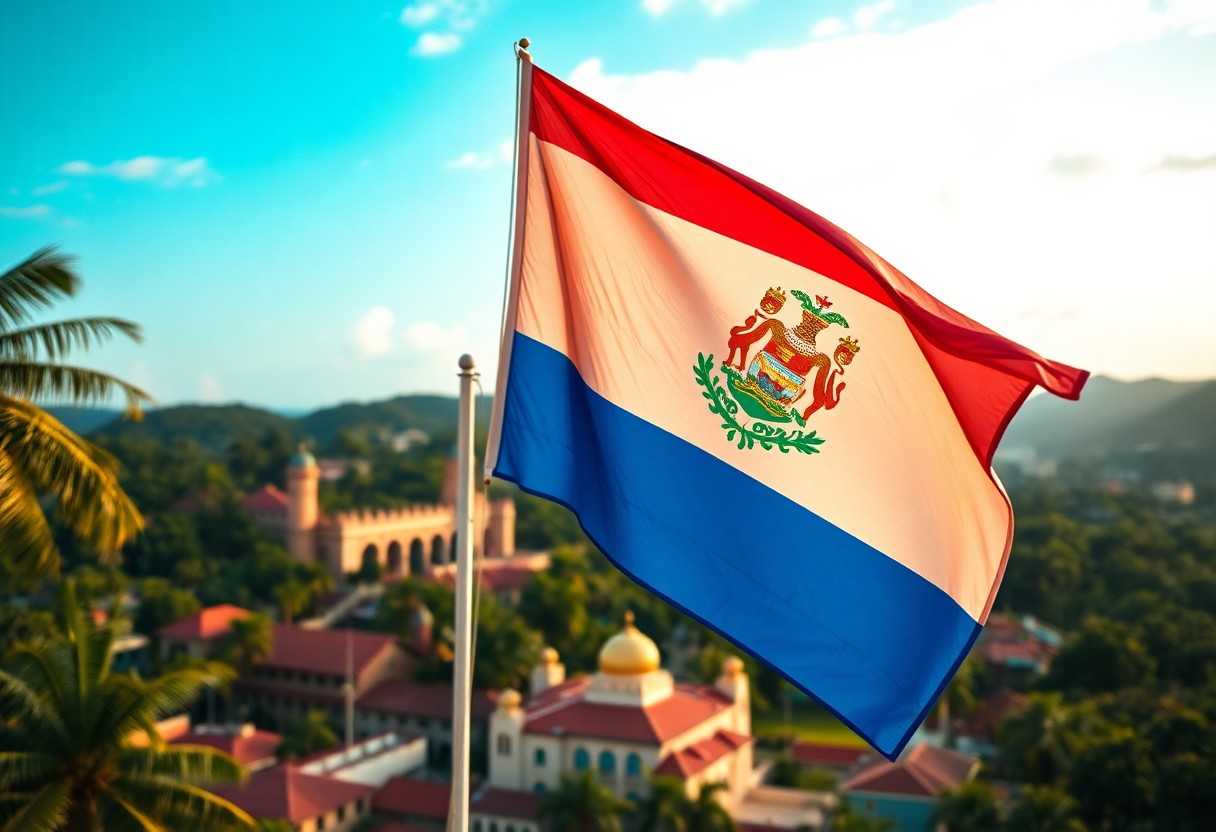
Flag Elements
If you examine the Belize flag closely, you’ll notice its distinctive design combines three main elements: the royal blue background, red horizontal stripes, and the centered coat of arms. This arrangement creates a powerful symbol of national identity that sets Belize’s flag apart from other Central American nations.
Colors and Their Significance
The Belize flag has deep meaning in each color choice. The royal blue represents the People’s United Party that led Belize to independence, while the red stripes symbolize your nation’s desire for unity. The white circle in the center provides a striking backdrop for the detailed coat of arms, making it visible from a distance.
Coat of Arms Analysis
The coat of arms contains vital symbols of Belizean heritage. The mahogany tree represents your forestry industry, while the tools held by two woodcutters reflect the historical timber trade. The ship acknowledges your maritime legacy.
Your coat of arms tells an even deeper story. The 50-leaf wreath represents 1950, marking the start of Belize’s independence movement. The Latin motto “Sub Umbra Floreo” (Under the Shade I Flourish) appears below, while the two men – one Mestizo and one African-Belizean – showcase your country’s rich cultural diversity.
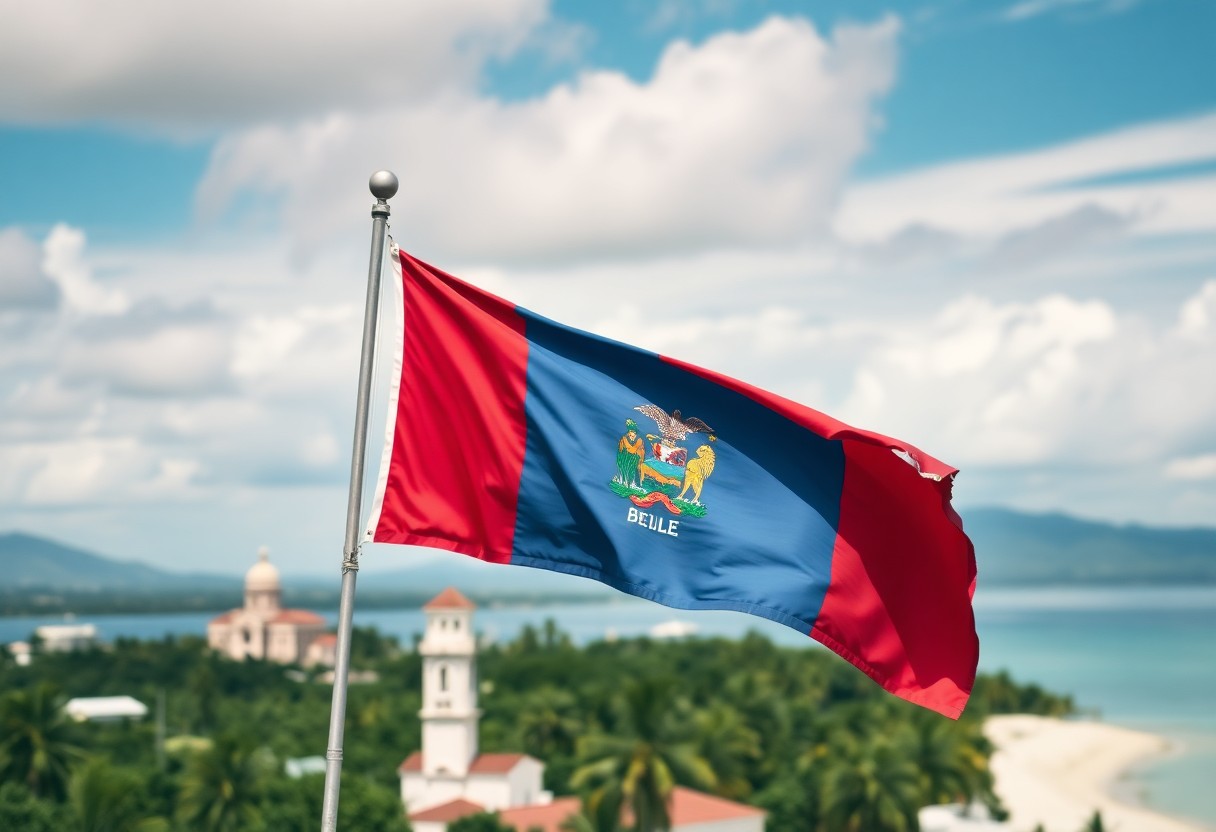
Symbolic Representations
After gaining independence, your understanding of the Belize flag reveals deep symbolism in every element. The coat of arms stands at the center of a royal blue background, bordered by red stripes representing the nation’s unity. You’ll notice the flag’s proportions maintain a ratio of 2:3, creating a balanced visual representation of national pride.
Cultural Elements
Between the various elements of the flag, you’ll discover representations of Belize’s rich heritage. The mahogany tree symbolizes the nation’s historic timber industry, while the two workers—a Mestizo and an Afro-Belizean—reflect your country’s diverse cultural makeup. The surrounding 50 leaves commemorate the beginning of the independence movement in 1950.
National Identity
Across Belize, the flag’s motto, “Sub Umbra Floreo” (Under the Shade I Flourish), embodies the national spirit of growth and resilience. The sailing ship represents your nation’s maritime history, while the tools held by the figures represent the primary industries that built the country.
A deeper look at your flag reveals its role in fostering national unity since 1981. The specific regulations governing its display – including proper illumination after sunset and ceremonial disposal procedures – demonstrate Belizeans’ profound respect for this powerful symbol of sovereignty. The flag continues to serve as a unifying force across your diverse communities.
Official Adoption
To understand your national flag’s journey, you should know that the official adoption of the Belize flag occurred on September 21, 1981. After careful consideration of 80 submissions, the design received formal approval from the National Assembly. Your flag’s distinctive elements, including the coat of arms and the red-white-blue color scheme, were chosen to represent the nation’s unity and heritage.
Independence Day Ceremony
After years of anticipation, you would have witnessed a historic moment at midnight on September 21, 1981. The British Union Jack was lowered for the final time, and your new national flag was raised at Government House in Belize City. The ceremony marked your country’s transformation from a British colony to an independent nation while thousands of citizens celebrated this moment.
Legal Status
Any use of your national flag must follow the strict guidelines outlined in the National Flag Protocol. The protocol prohibits using the flag for commercial purposes or in any manner that could diminish its dignity. You must ensure the flag is displayed between 6 a.m. and 6 p.m. unless properly illuminated.
Plus, you should know that violating these regulations can result in penalties. The law requires your flag to be treated with respect at all times. When your flag becomes worn or damaged, it must be disposed of through a formal burning ceremony. Government buildings, schools, and official institutions must follow specific flag display and maintenance guidelines.
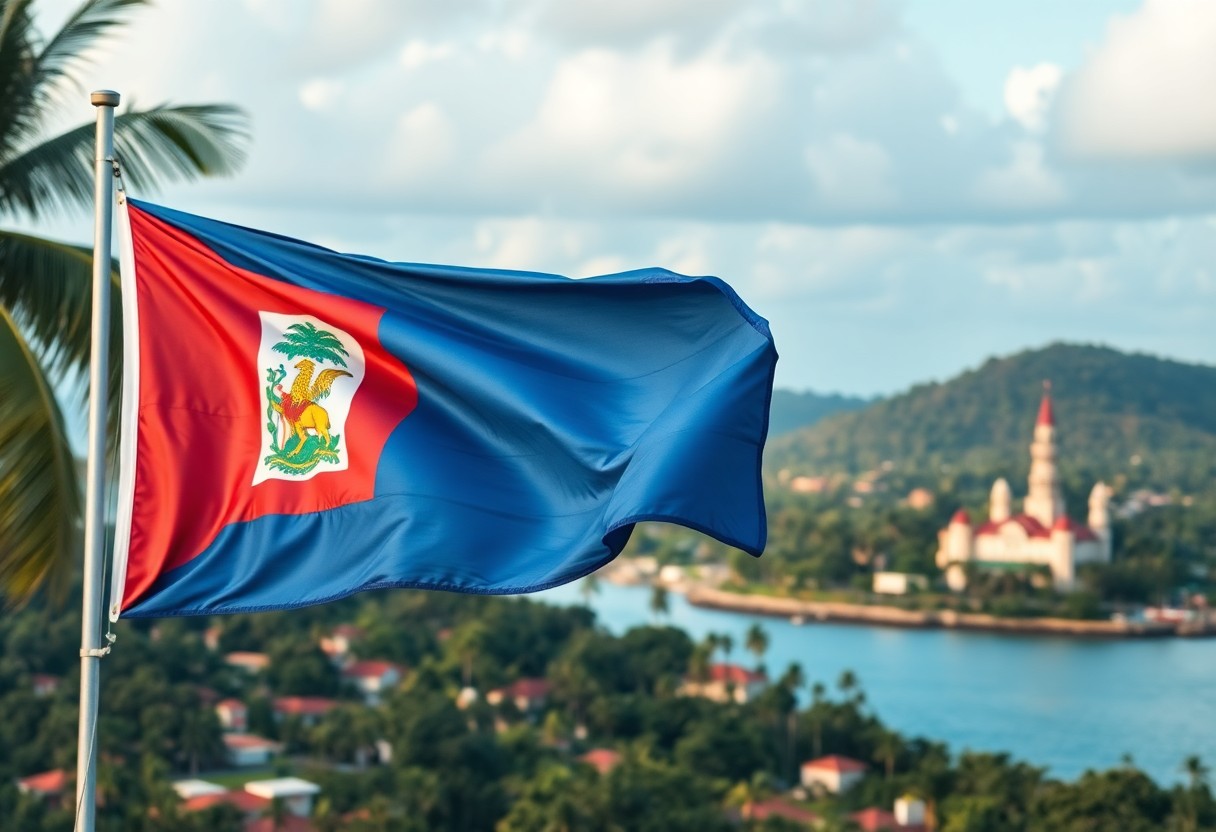
Protocol and Etiquette
Not all flag displays are created equal. As you handle the Belize flag, you must follow specific protocols to show proper respect for this national symbol. The Department of Protocol provides detailed guidelines to ensure your flag handling aligns with national standards, whether displaying it at official ceremonies or private events.
Display Guidelines
It would help to display your flag correctly positioned and lighting between sunrise and sunset. When displaying multiple flags, ensure the Belize flag takes precedence on your right. It would help if you placed it at an equal height as other national flags but higher than any organizational flag. Proper illumination is mandatory during nighttime displays.
Proper Handling
When handling your flag, follow strict care protocols. Never let it touch the ground or water. When storing, keep it folded in a triangle shape and place it in a clean, dry location. Damaged flags must be retired through ceremonial burning.
And when it comes to maintenance, you must regularly inspect your flag for signs of wear. If you notice any tears or fading, immediate replacement is necessary. Your flag should be washed or dry cleaned when soiled, following specific care instructions to preserve its colors and fabric integrity.
To wrap up
With this in mind, you can now appreciate how the Belize flag symbolizes the nation’s journey to independence. Through its carefully chosen colors and meaningful coat of arms, you’ll recognize the deep connection to Belize’s heritage, from its mahogany trade to its diverse population. As you explore this Central American nation, you’ll see how the flag continues to unite its people, representing their shared history and aspirations. Whether you’re a visitor or resident, understanding these origins helps you connect with the heart of Belizean national identity.
FAQ
What do the colors and symbols on the Belize flag represent?
The Belize flag features a royal blue background with red stripes at the top and bottom, representing the unity of the nation. The center displays the national coat of arms, which includes a mahogany tree symbolizing the timber industry, a ship reflecting maritime heritage, and two men—a Mestizo and an Afro-Belizean—representing the country’s ethnic diversity. The 50-leaf wreath commemorates 1950, the year Belize began its independence movement.
Who designed the Belize flag, and when was it officially adopted?
The Belize flag was designed by two public servants, Mr. Everal Waight and Mr. Inez Sanchez, whose submissions were selected from 80 entries in a national competition. The flag was officially adopted on September 21, 1981, when Belize gained independence from British rule. The design incorporated elements from the People’s United Party flag while adding distinctive national features.
What are the proper protocols for displaying the Belize flag?
Unless adequately illuminated at night, the Belize flag must be displayed between 6 am and 6 pm. It should never be used as clothing or decoration, and damaged flags must be disposed of through a proper flag-burning ceremony. The flag requires respectful handling and should be maintained in good condition to honor its status as a national symbol. The Latin motto “Sub Umbra Floreo” (Under the Shade I Flourish) appears on the coat of arms within the flag.
